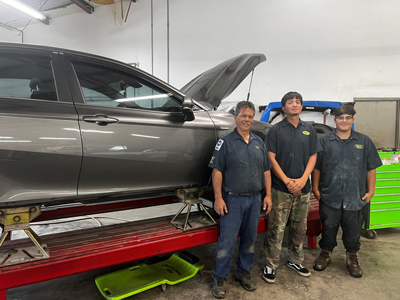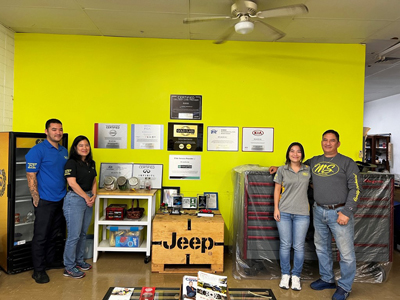How are you handling calibrations and the new procedures needed?
We do everything in-house. First, we pre-scan the vehicle and later, do an in-progress scan. I do road tests on the vehicle’s functionalities; then, we'll deliver the car to the dealership to do the calibration. When it comes back from the dealership, we conduct a post-scan and operations test to make sure it has a final clean bill of health before releasing it to the customer. We also provide documentation of what was done during the repair.
When we take vehicles to the dealership, we need to stay on top of what is being done. Open communication is very important to let them know what functionalities need to be checked and what we expect. We also ask them to call us if they find certain procedures that need to be done above and beyond what we can authorize. Otherwise, they might deliver the product back beforehand.
With an increase in the number of EVs and vehicles with ADAS features, what is the importance of training?
It’s imperative. Where else will you get the knowledge to repair cars correctly? Customers want accuracy when we fix their vehicles, so we need to continually train and keep up with the changes taking place in the industry as cars evolve.

I started I-CAR training in 1985 and have I-CAR Platinum recognition. The shop became I-CAR Gold Class in 2016. We have been doing a lot of training with I-CAR and I’ve found that it is a great resource.
We have good relationships with dealers and vendors and train with them. We also do a variety of training in-house, as well as online every month and are ASE-certified.
Training in Hawaii is challenging but we make it happen. I'll spend whatever we need to.
How do you find and hire technicians?
I never solicit other people's staff or go out and hunt them down. The industry is in very deep need of good technicians, and the only way to be successful is to build your own team.
We’re finding new employees who aren’t part of the industry and training them to be technicians. We have a lot of young staff and I can tell pretty quickly if they are interested. If they are intrigued, we start investing in their training.

What is the importance of building a culture?
Building a culture is critical. Once we think alike, we can address and see things with the same eye and adapt.
Today's kids are often defined by what they do in recreation rather than what they do as a vocation. We’re trying to teach the younger generation that this isn’t a job; it’s a career. We teach them to be diligent and responsible and invest in themselves. We want them to be proud of what they do and feel they work in a respectable job that puts families in safe vehicles.
The new generation is used to instant gratification. We want them to understand that they can’t spend 15 minutes on YouTube or Google to learn this job. They need to put time into it and have patience.
Part of our culture is also about building a team. We work closely and operate as one.
For employees to be the best they can be, we train them in their deficiencies, find what they are most skilled at and encourage them to work in that area.
What tips can you share about being successful in running a multi-generational family business?
Being a family business in our industry takes a different breed of people and a lot of families fail. Growing up, there were some days I wanted to throw in the towel and it was very frustrating. I was pushing a lot of training and building more technicians because I knew that would be needed in the future and saw the potential for the business to grow.
At the same time, my dad was happy with how things were and didn’t feel a change was needed. I learned from those experiences, so I’m open with my kids and share what my dad didn’t with me. That might mean putting the difficulties or insecurities on the table so we can work well together.
I always say I’m never the best because I push harder every day. That way, I never stop trying.










Stacey Phillips Ronak